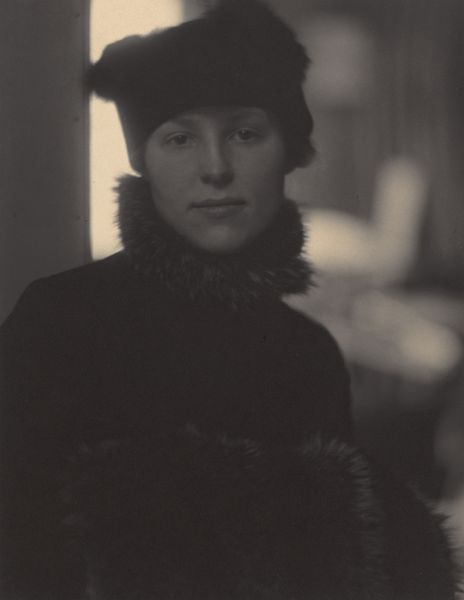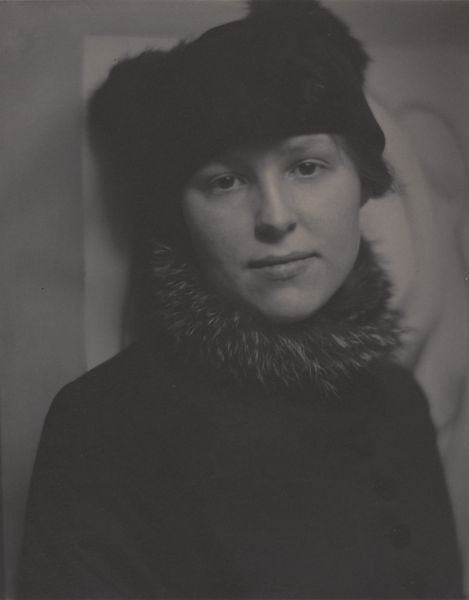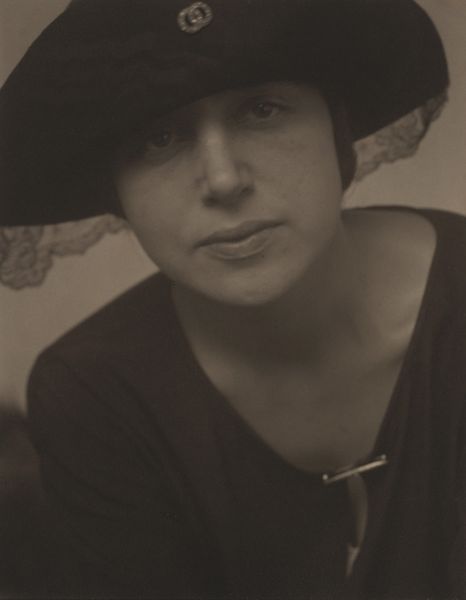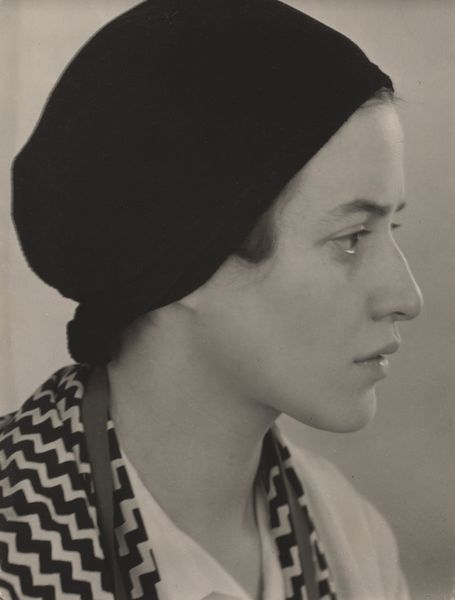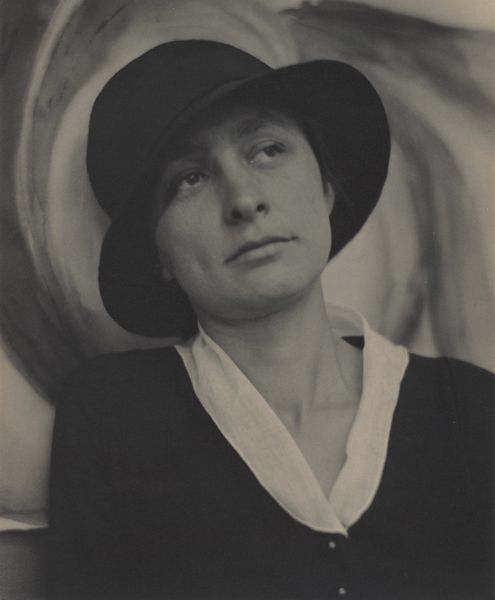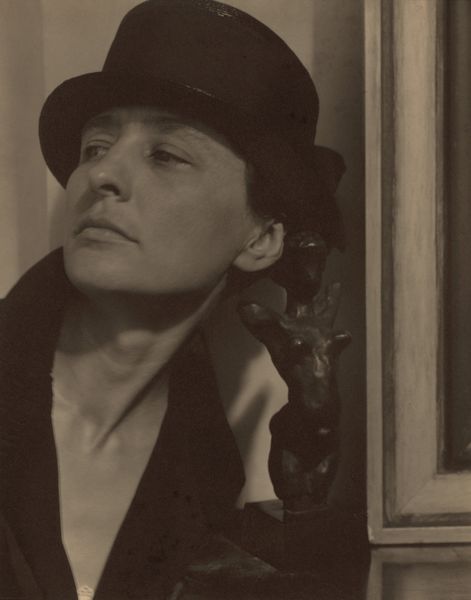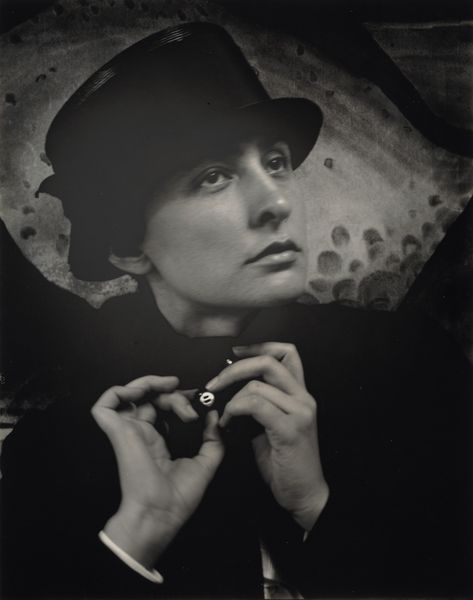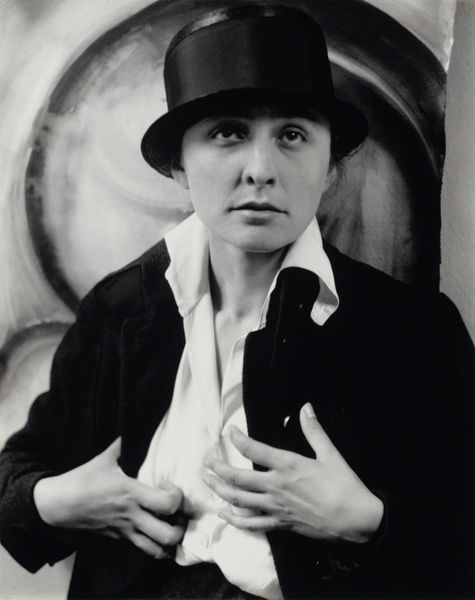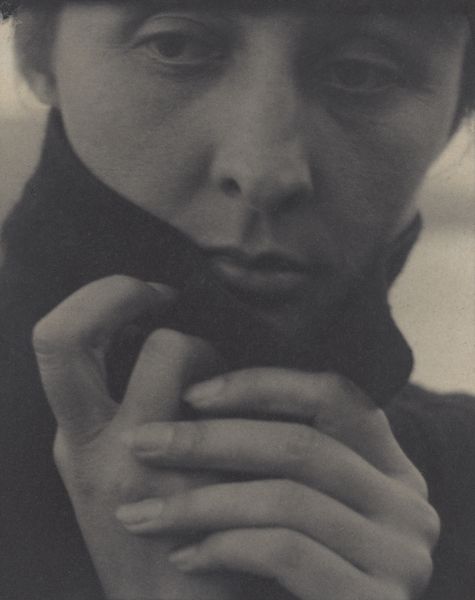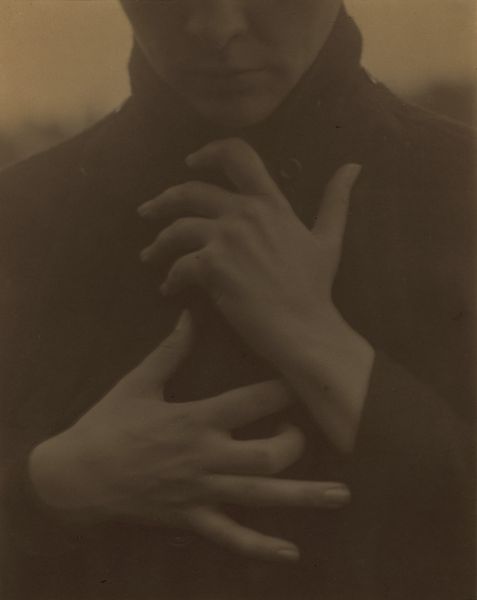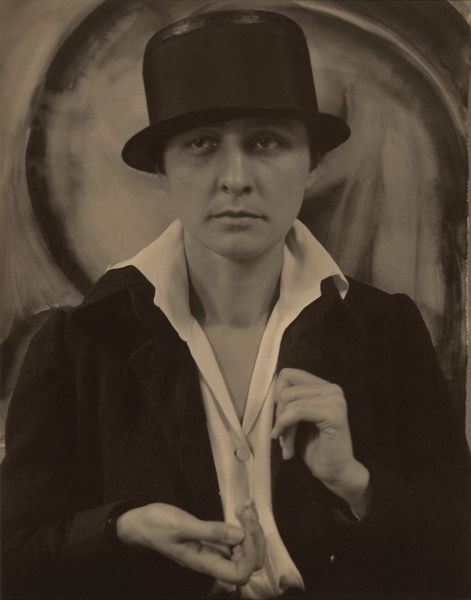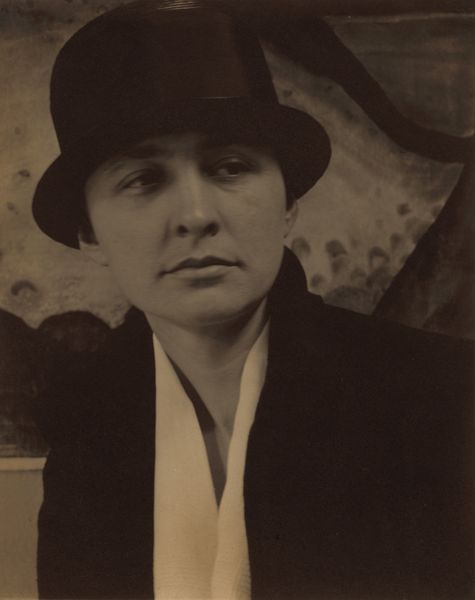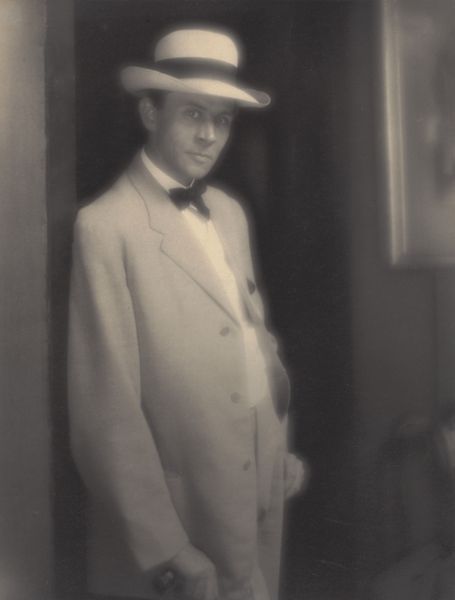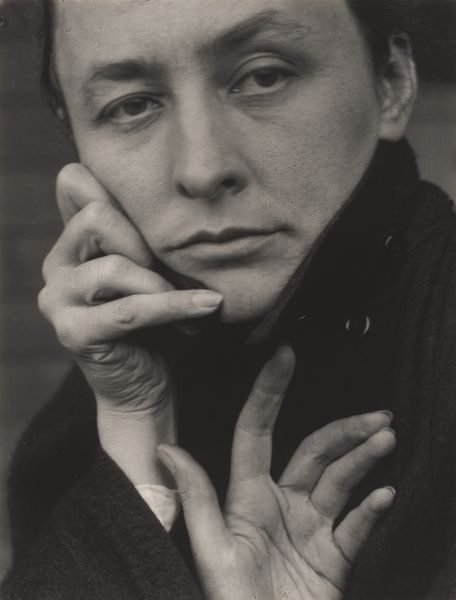
photography
#
still-life
#
pictorialism
#
portrait
#
photography
#
modernism
Dimensions: image: 23.7 x 18.7 cm (9 5/16 x 7 3/8 in.) sheet: 25.3 x 19.9 cm (9 15/16 x 7 13/16 in.)
Copyright: National Gallery of Art: CC0 1.0
Curator: This is Alfred Stieglitz’s photograph, "Kitty at 291," taken in 1915. It's a portrait of a woman, Kitty, in front of a drawing. Editor: It has such an intimate, almost contemplative mood, doesn't it? The soft focus and monochrome palette give it a real sense of quietness, and her direct gaze holds you. Curator: Absolutely. And that softness is deliberate. Stieglitz was a key figure in the Pictorialist movement, where photography was seen as fine art. It's fascinating how he used photographic processes, such as darkroom manipulation, to achieve that painterly effect. Notice how the textures of the fur hat and scarf are rendered. Editor: Speaking of fur, let’s talk about representation. The overt luxuriousness is unavoidable—consider what that says about access and class. How does this image, capturing an obviously well-to-do woman, participate in or subvert societal expectations and gendered roles during the early 20th century? Is she a consumer? Is she also an aesthete? Curator: I’m so glad you pointed that out, because the fur can also be interpreted as performative. Stieglitz saw "291", his gallery, as a space where art and life intersected. I wonder if Kitty chose these clothes for her portrait sitting in order to portray an artistic persona that reflected her understanding of “modern” aesthetic and class. It's fascinating to see how clothing itself becomes part of the artwork’s language. Editor: Also, let’s look behind Kitty: the figure on the wall almost seems to observe *her*. The body of a person and an outline of a body... Is Stieglitz speaking to performance by underlining the different realities of each representation? Curator: It might be. One last point that resonates for me: Stieglitz champions photography as a medium on par with painting and sculpture, as something to be respected and valued, to be consumed and discussed. Editor: Yes! We're not just looking at a portrait. We're observing an artistic manifesto! Curator: Looking at this work really highlights how the photograph operates on multiple material levels. It also made me question the ethics of consumption involved in the production of the fur she wears. Editor: For me, it re-emphasizes how representation never exists in a vacuum and the important power dynamics involved in image making.
Comments
No comments
Be the first to comment and join the conversation on the ultimate creative platform.
